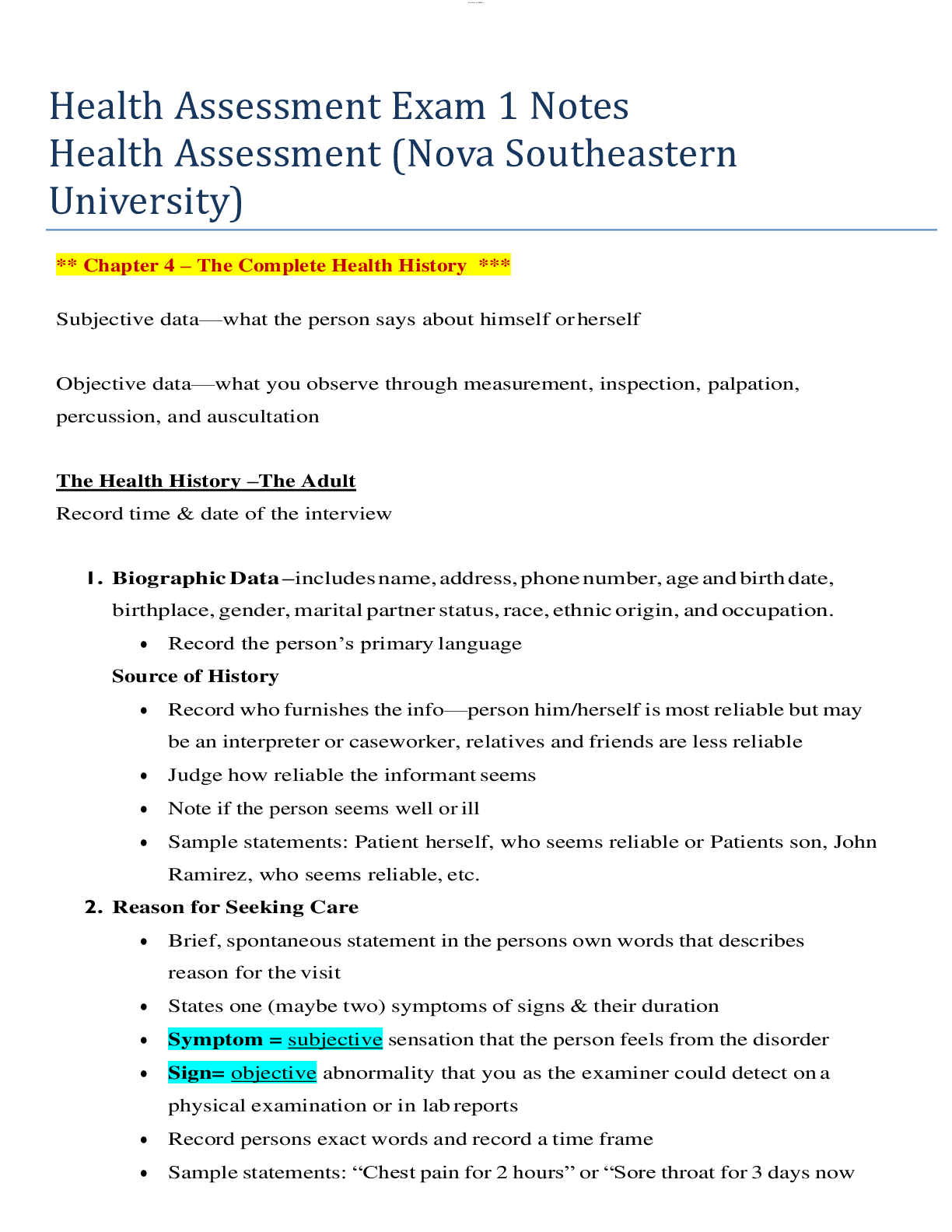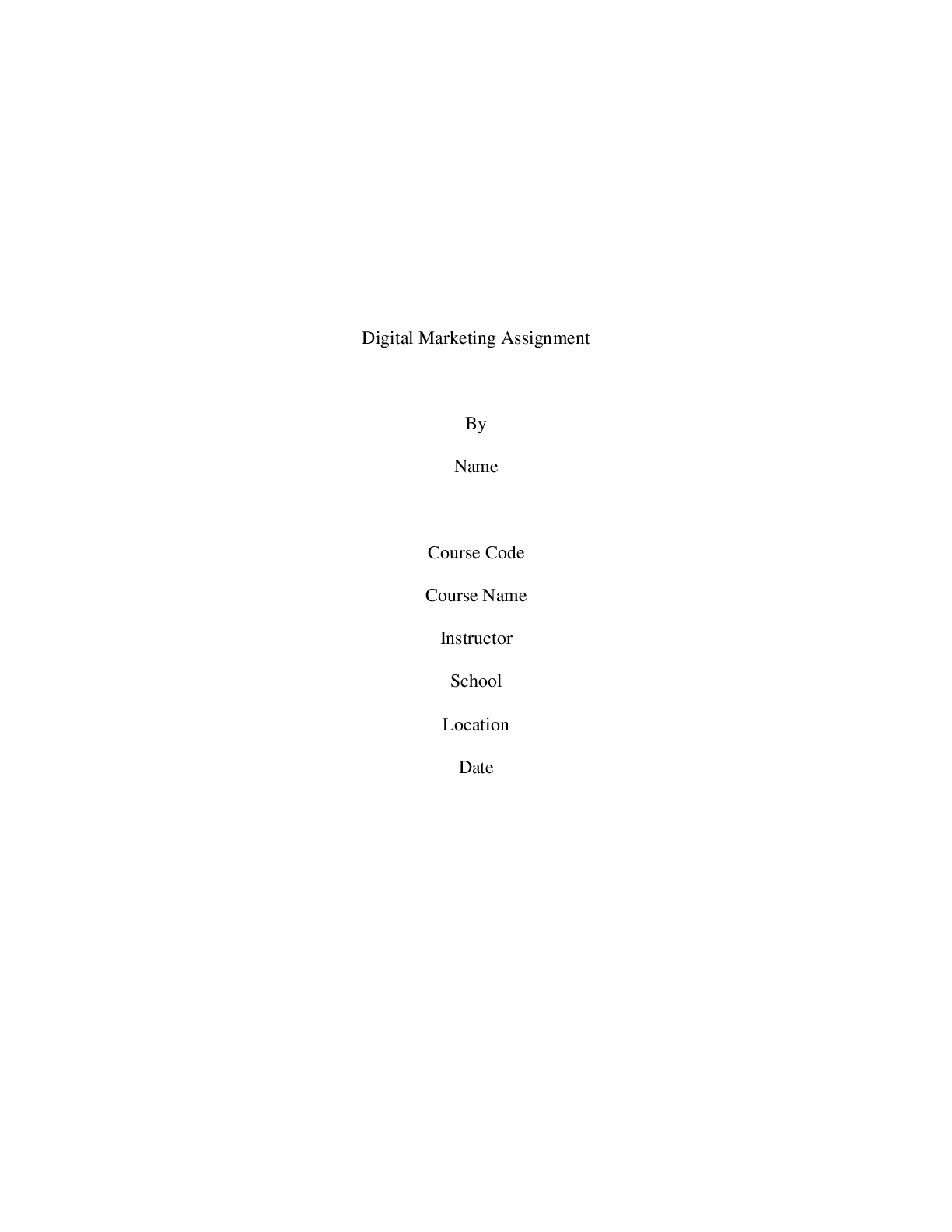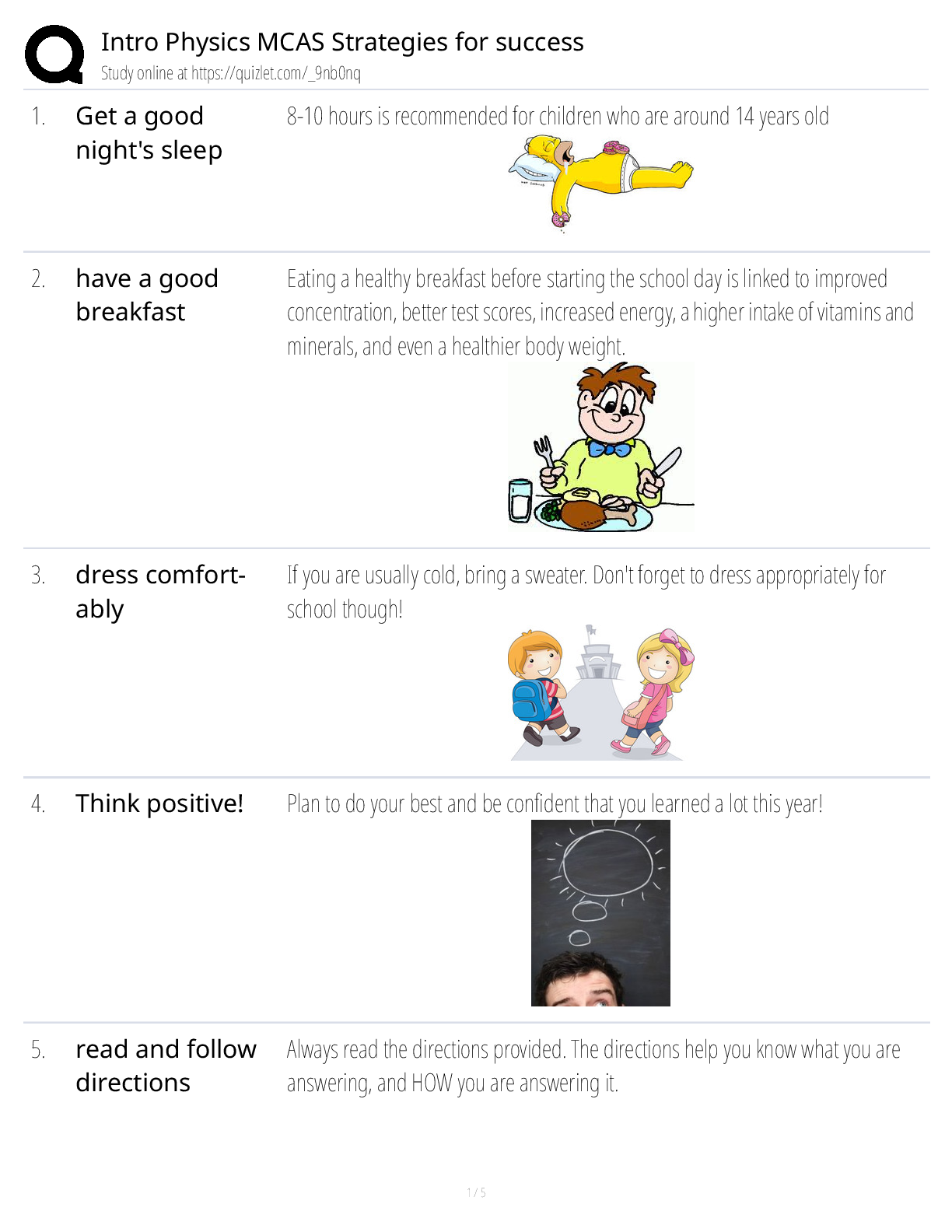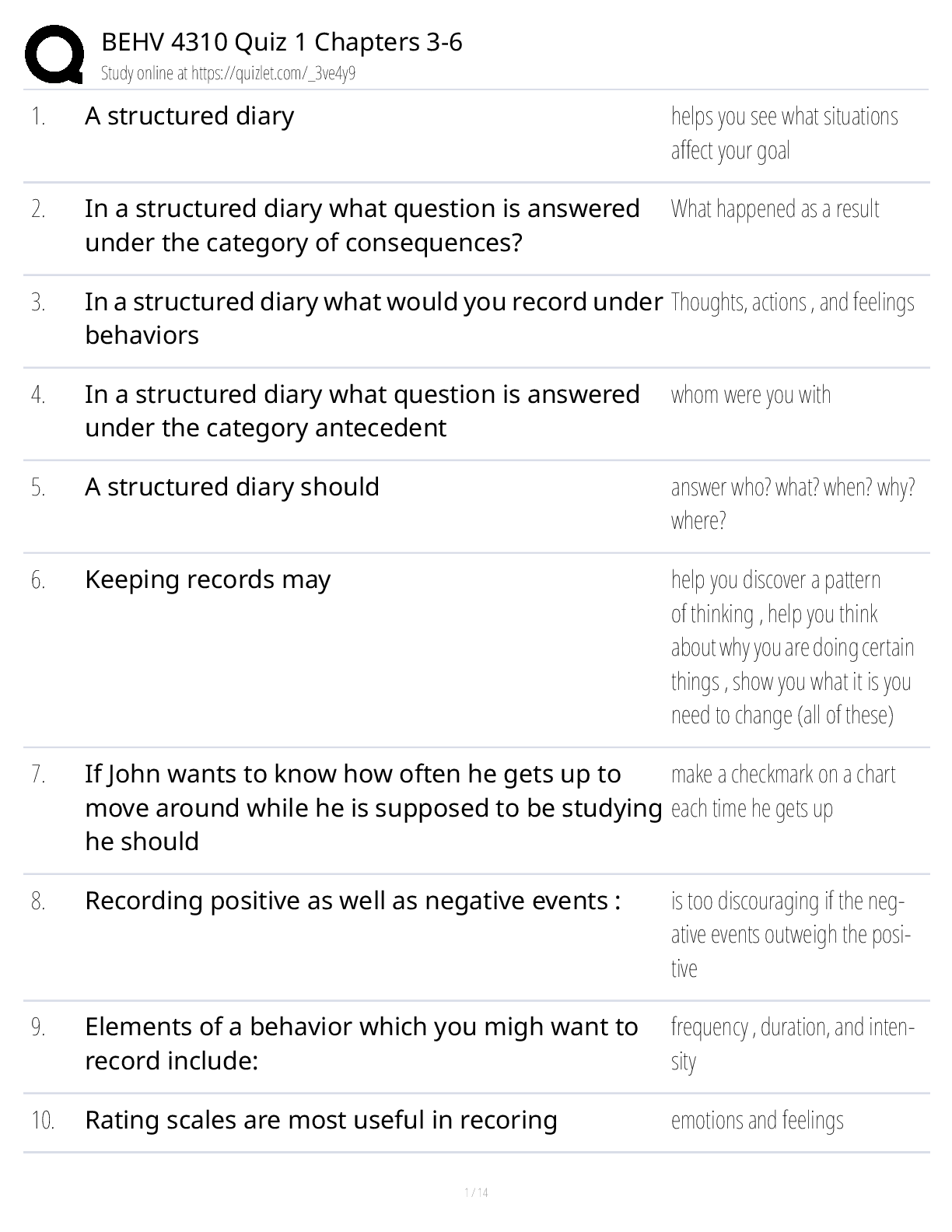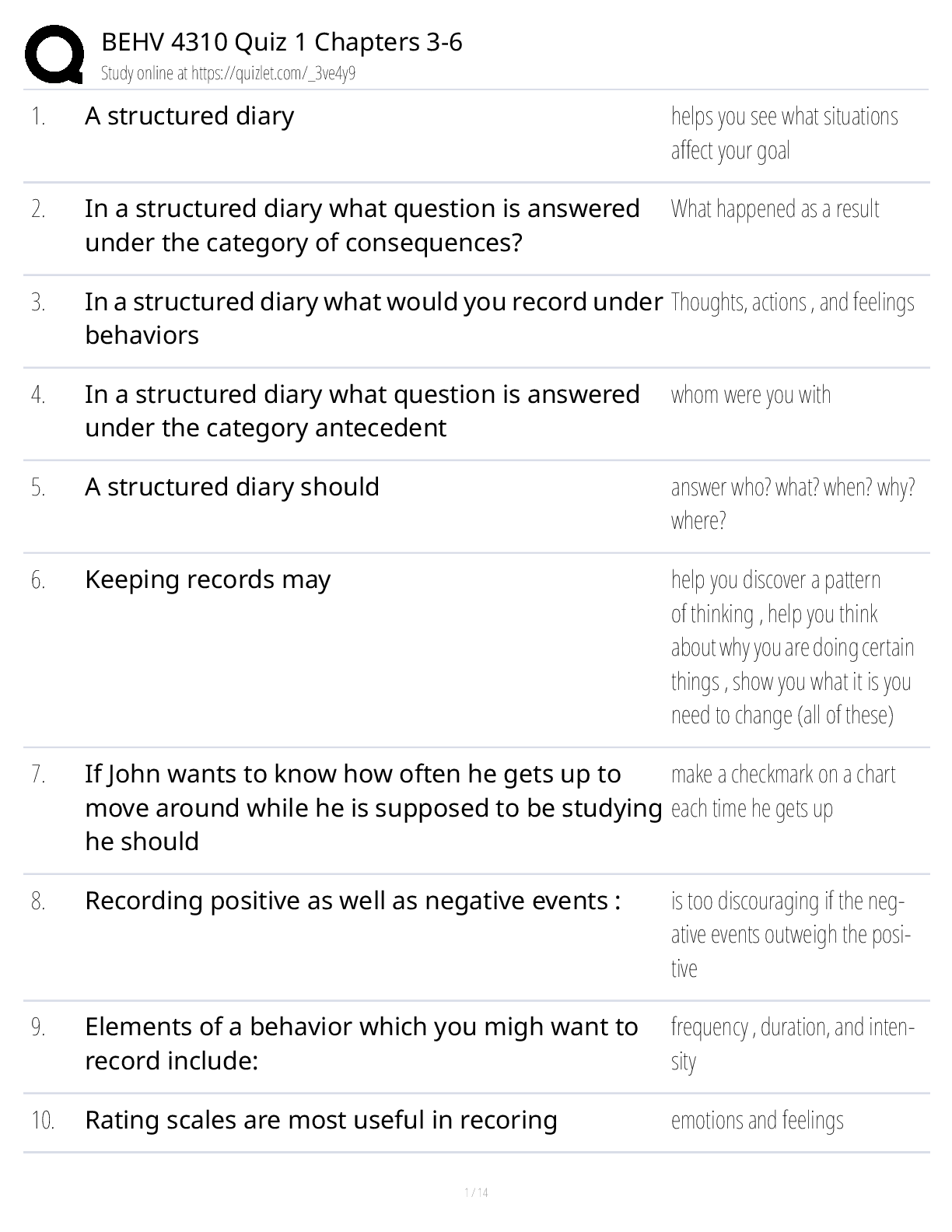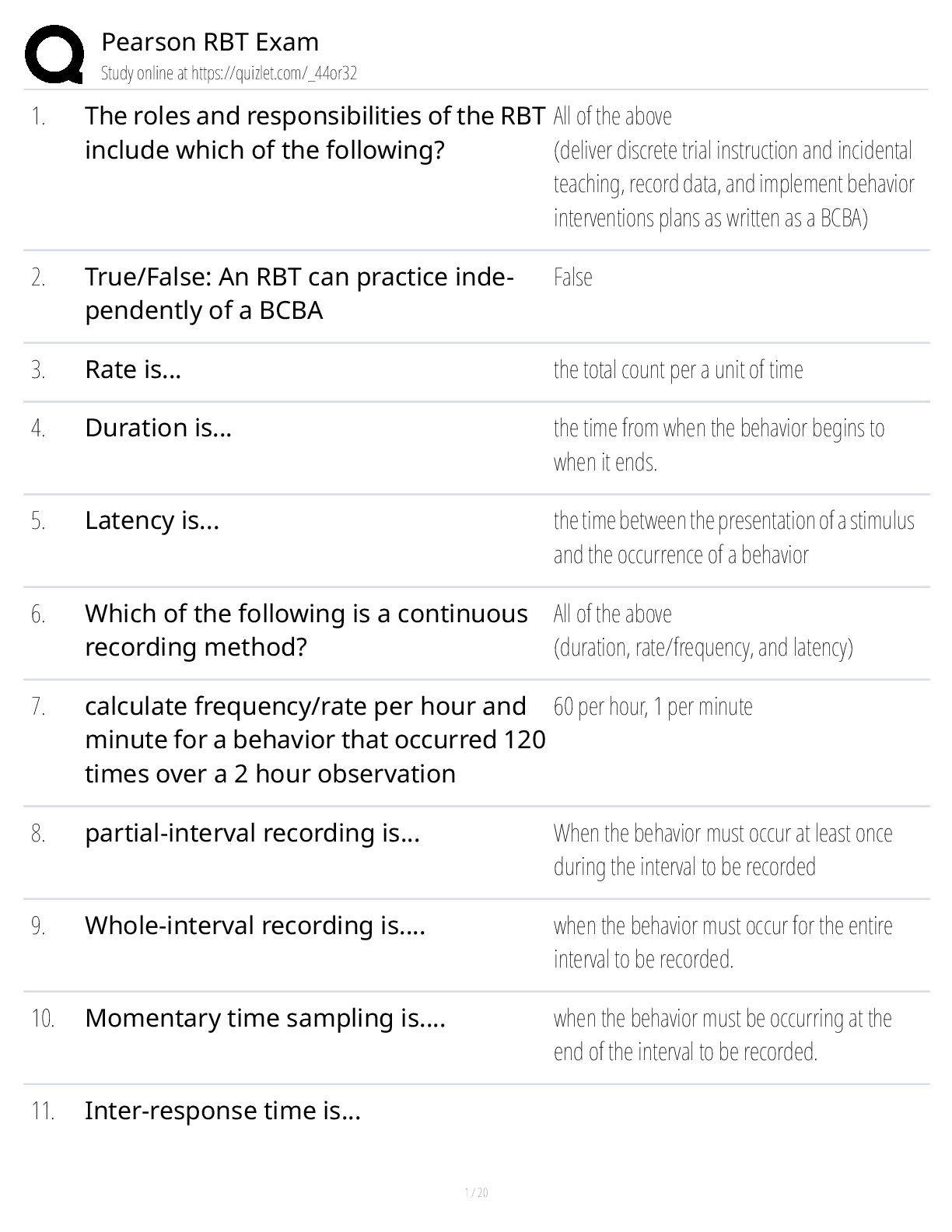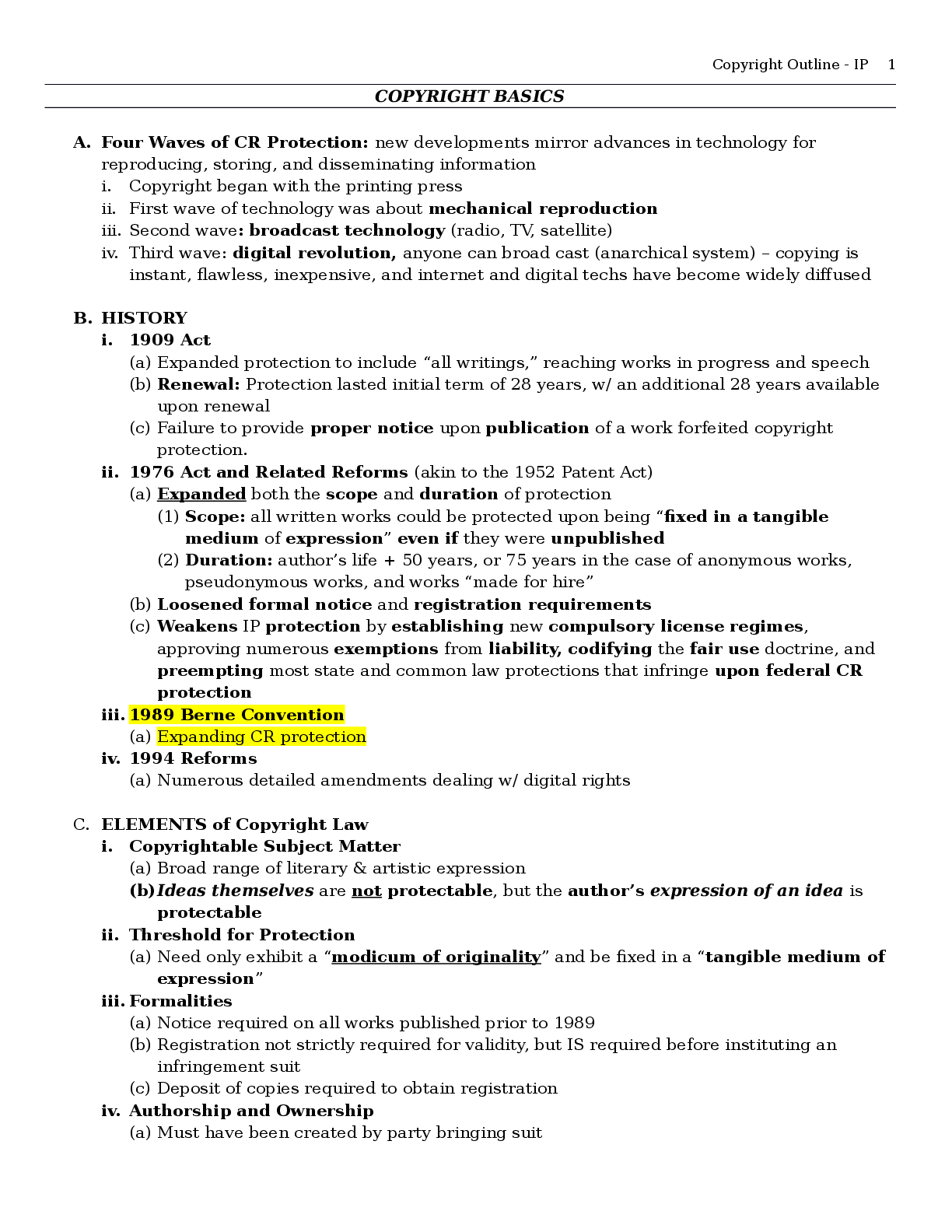Linguistics > Class Notes > APPLICATION OF LINGUISTICS ACQUISITION WEEK 2- FIRST LANGUAGE ACQUISITION (Class Notes, 28 pages) (All)
APPLICATION OF LINGUISTICS ACQUISITION WEEK 2- FIRST LANGUAGE ACQUISITION (Class Notes, 28 pages)
Document Content and Description Below
LANGUAGE ACQUISITION: INTRODUCTION • How do children acquire language? • What tools do they need to master a language in order to become a native speaker? • How do they parse an endless stre ... am of speech? WHAT DO CHILDREN NEED TO ACQUIRE LANGUAGE? • Discriminate language (linguistic input) from other noises • Learn to produce allophones • Identify the phonemes in their languages • Segment speech into words • Combine sounds to form words, and words into phrases/sentences LANGUAGE ACQUISITION Age Language Progresses 2-4 days Can distinguish parents’ language(s) from foreign languages 1 month Are sensitive to phoneme contrasts in all languages LANGUAGE ACQUISITION • Children acquire their first language effortlessly in the span of a few years • However, this process is not as simple as it seems • Children acquire language without being explicitly taught • We don’t teach babies prescriptive rules or sounds! METHODOLOGY • Data on child language acquisition is collected in two ways: • Naturalistic Observations • Experimentations NATURALISTIC OBSERVATIONS • Observation and recording of children’s spontaneous speech • Diary studies: the researcher or parents record children’s linguistic development everyday EXPERIMENTAL APPROACH • Experimental approach: typically cross-sectional • Observation of linguistic development of many children at different points in time EXPERIMENTAL APPROACH • Imitation tasks: a child is asked to repeat a linguistic structure • Gives researchers an idea of which stage of language acquisition the child is at HONOLOGICAL DEVELOPMENT • When children are born, they have the perceptual system that picks out speech: ABBLING STAGE • Children begin to produce speech sounds early in their development (around 6 months) DEVELOPMENTAL ORDER • Babies babble all the way to 12 months of age • Eventually babbling begins to sound like real words • By the age of 18 months, children’s vocabulary consists of about 50 words INVENTORY OF AN ENGLISH SPEAKING CHILD BETWEEN 2 AND 4 YEARS OF AGE PHONETIC PROCESSES IN EARLY SPEECH OCABULARY ACQUISITION • By 18 months of age, a child’s early vocabulary consists of about fifty words • Most of these words are nouns • Adjectives and verbs are acquired later STRATEGIES FOR WORD ACQUISITION • Primarily 3 strategies used by children to figure out meanings of words: 1. Whole object assumption – the word refers to the whole object, not its parts OVEREXTENSION • The meaning of the word is overgeneralized • For example, a child may use the word dad to refer to their father, as well as other men (uncles, strangers, etc.) MORPHOLOGICAL DEVELOPMENT • Children start off by learning roots STAGES OF MORPHEME ACQUISITION • Children acquire affixes in 3 stages (called U-shaped learning) Stage 1 – Children use irregular forms correctly (learnt as chunks, the morphological rules are not acquired) ORDER OF MORPHEME ACQUISITION • Children tend to acquire morphemes in the following order: 1. -ing 2. Plural –s 3. Possessive –’s [Show More]
Last updated: 3 years ago
Preview 1 out of 29 pages

Buy this document to get the full access instantly
Instant Download Access after purchase
Buy NowInstant download
We Accept:

Reviews( 0 )
$3.00
Can't find what you want? Try our AI powered Search
Document information
Connected school, study & course
About the document
Uploaded On
Apr 17, 2020
Number of pages
29
Written in
All
Additional information
This document has been written for:
Uploaded
Apr 17, 2020
Downloads
0
Views
109




